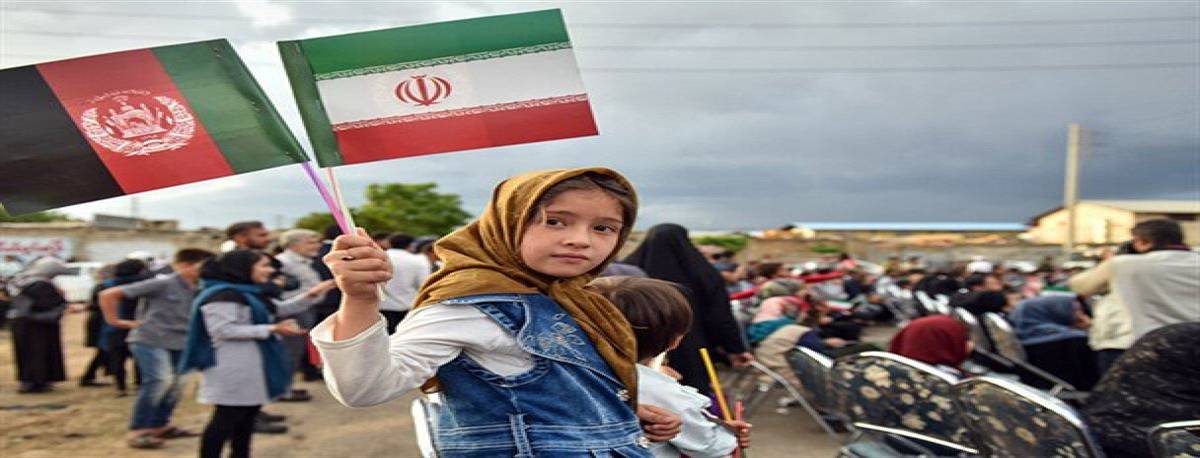2774 Views
Inside Iran’s Refugee Dilemma: 8 Million Afghans, Western Sanctions & a Battle for Compassion
For over four decades, the Islamic Republic of Iran has hosted Afghan refugees—a commitment shaped by deep cultural ties, a shared 900-kilometer border with Afghanistan, and the country’s ongoing conflict. By 2025, estimates suggest Iran will host 5 to 8 million Afghan nationals. Among them, approximately 761,000 possess "Amayesh" (temporary residency) cards, 360,000 hold passports, 270,000 have residence permits, and 2.6 million are registered through government census. However, a significant portion remains undocumented. In response to the challenges posed by this large population, Iran has developed and implemented a comprehensive plan focusing on legal regulation, voluntary return, and regional cooperation.
A Gradual and Non-Abrupt Implementation
Iran’s refugee organization plan was not a sudden or reactive action, but a premeditated initiative developed over nearly a year. The Iranian government set July 6, 2025, as the legal deadline for undocumented Afghan nationals to regularize their status or leave the country. This grace period allowed adequate time for preparation and was part of a broader strategy launched in 2024. The establishment of the National Organization for Migration (NOM) two years ago—replacing the Bureau for Aliens and Foreign Immigrants Affairs (BAFIA)—demonstrates long-term planning. This phased approach contrasts with abrupt policy changes in other areas, providing stakeholders time to anticipate and adapt to evolving policies.
Distinguishing Legal and Illegal Migration
A cornerstone of Iran’s approach is clearly distinguishing between legal and illegal migration. The plan targets undocumented migrants who entered Iran without authorization, while continuing support for those with legal status, such as Amayesh cardholders or residents with permits. According to government data, by late last year, around 2.7 million Afghan nationals were registered, while an estimated 2 to 4 million remain undocumented. By focusing on illegal migration, Iran aims to reduce pressure on public services such as healthcare, education, and employment—systems heavily burdened by the undocumented population. This distinction ensures that both Iranian citizens and legally residing Afghans can access resources without excessive strain, aligning with principles of social justice and resource management.
Emphasis on Voluntary Return and Humanitarian Incentives
More than 80% of Afghan returns from Iran have been voluntary, accompanied by humanitarian incentives such as transportation, food, and basic aid. Official statements, including remarks by Iran’s First Vice President, have reaffirmed the government’s commitment to facilitating dignified returns through a coordinated system.
Diplomatic Coordination with Afghanistan
This initiative has been coupled with diplomatic efforts between Iran and Afghanistan. Several rounds of negotiations have been held to ensure the return process does not overwhelm Afghanistan’s fragile infrastructure. While no specific bilateral agreements for 2025 have been extensively documented, such coordination reflects a shared commitment to regional stability. The Solutions Strategy for Afghan Refugees (SSAR), a multilateral framework involving Iran, Afghanistan, and Pakistan, provides a regional platform for these efforts. Iran’s engagement aims to ensure returning Afghans receive adequate support, acknowledging the economic and humanitarian challenges in Afghanistan, where—according to a recent UNDP report—70% of the population lives at a subsistence level.
Phased Facilitation and Deadline Extensions
To minimize the burden on Afghanistan, Iran has adopted a phased approach to returns. The initial deadline of July 6, 2025, has been extended to August 5, with the possibility of further extension to September 5, 2025. This flexibility reflects Iran’s commitment to humanitarian principles, allowing for manageable return flows and giving Afghanistan sufficient time to prepare. The IOM’s 2024–2025 Crisis Response Plan for Iran, with a $47.8 million budget, targets 600,000 individuals and focuses on saving lives, providing solutions for displacement, and facilitating regular migration pathways. These extensions and support mechanisms reflect Iran’s efforts to balance enforcement with human dignity.
Responding to Domestic Security and Social Concerns
The large presence of undocumented Afghans has raised security and social concerns within Iran. The government’s plan seeks to improve public services for legal residents. The Islamic Republic aims to preserve internal security and ensure fair resource distribution by identifying and returning undocumented migrants. This plan includes public awareness campaigns encouraging legally residing Afghans to report illegal activity, while reinforcing the rights of lawful residents.
Iran’s Humanitarian Legacy
Iran’s approach to Afghan refugees differs significantly from the immigration policies of many Western countries. Over the past four decades, Iran has hosted millions of Afghans, granting them access to education, healthcare, and social services—even under tough conditions like international sanctions. The government's commitment to free education for Afghan children, emphasized by the Supreme Leader in 2021, reflects deep cultural and civilizational ties between the two nations. Unlike some Western nations criticized for restrictive immigration policies, Iran has sought to uphold humanitarian values, even as it navigates the challenges of managing a large refugee population.
Conclusion
Iran’s refugee plan is a multifaceted initiative that integrates national interests with humanitarian and regional responsibilities. Through phased implementation, distinction between legal and illegal migration, emphasis on voluntary return, coordination with Afghanistan, extended deadlines, and responses to domestic concerns, Iran demonstrates a commitment to social justice and human dignity. Despite controversies surrounding deportations, Iran’s efforts reflect a longstanding tradition of hospitality and an empathetic approach to migrants—offering a potential model for responsible refugee management in a challenging global context.
*Translated by Ashraf Hemmati from the original Persian article written Mohammad Esmail Khanian

Comment
Post a comment for this article